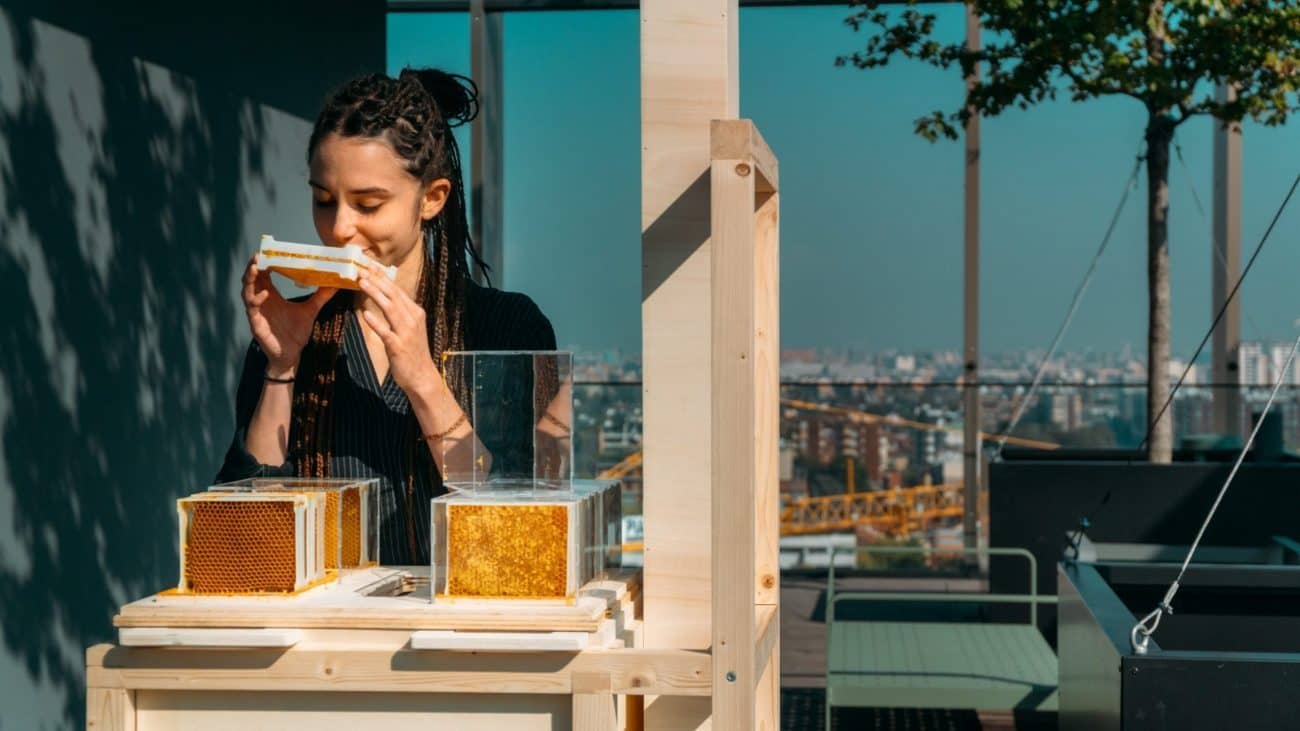“Save the ocean!” “Save the turtles!” “Save the corals!” These are probably some of the many ocean themed calls to action you’ve seen over and over again. Reading the headlines, you’d think the ocean was a damsel in distress waiting for us to come and save it from a slew of villains. What if we have this narrative all wrong? What if we didn’t treat the ocean and its brilliant life forms as victims, but rather saw them for what they really are: ingenious, resilient, world-changing superheroes that could save us.
It’s time to turn the narrative about our oceans upside down. The ocean is full of ready-made solutions to combat climate change, so what could happen if we rethought the narrative we’ve so often been told and thought outside the box?

Working Alongside the Brilliance of our Oceans
From kelp forests to oyster reefs, mangroves to whale falls, the ocean has been evolving systems that keep our planet’s climate in check for millions of years. It produces 50-80% of our planet’s oxygen 1, and is one of the planet’s largest carbon sinks, absorbing 30-50% of the carbon dioxide produced by burning fossil fuels. 2
So what if, instead of throwing all of our efforts into technological solutions and trying to come up with new innovations to halt climate change, we adopted a strategy that worked in harmony with the ocean’s remarkable systems? This new strategy would work alongside our efforts to curb our human impact while enhancing ocean-made solutions by protecting, regrowing, and nurturing the ecological innovations that have been working for millennia.
A new vision for the future!
“Now we think about saving the ocean from plastic or from oil and oil spills or from overfishing. But really, we should be thinking about how the ocean is saving us. And what is it saving us from? It’s saving us from the climate change that we are creating. Essentially, ourselves.”
Susan Ruffo
In the TED Talk we’re about to share with you, UN Foundation Senior Advisor for Ocean and Climate, and Executive Director of The Circulate Initiative, Susan Ruffo, gives us a new perspective on our oceans. One that is far more empowering than the ones we typically hear. It is based not in impending climate catastrophe, but in sustaining and nurturing climate innovation.
With sea grasses that can protect coastlines from rising sea levels, to energy solutions that could power the worldover while sustaining reefs and ocean ecosystems, we have a lot to learn from! This is, by no means, your typical take on the challenges we face as a planet. It is a new way of seeing the future that rests on discovery, innovation, and a solutions-based approach. Take a look:
If you’d like to see more inspiring talks like this one, go check out the TED website for a nearly endless library of talks that will leave you feeling excited by the innovation and possibility our future can hold.
“The ocean is a powerful source of solutions that we’ve overlooked for far too long.”
Susan Ruffo
What if we got as excited and funded the creation and protection of more kelp forests the way we do big tech breakthroughs? Kelp sequesters 20 times more carbon dioxide per acre than forests on land; that protects shorelines, provides habitat for important species, could become plastic alternatives, and a is valuable food source for agriculture and humans. 4
This is just one, small example of the myriad ways we could turn to our oceans for climate solutions. And as Susan Ruffo points out, we’ve only just begun to scratch the surface when it comes to understanding our oceans. With over 80% of our oceans still unexplored 5, there is so much more for us to understand, support, protect, and learn from.
If you want just a taste of some of the fascinating, climate change combatting innovations that are out there, check out some of these articles!
What is a Mangrove and Why Are They One of The World’s Most Important Trees?
When you feel like you’re in a hard situation, can you adapt to make it better for yourself and others? The remarkable mangrove trees do just that, making homes in salt water and saving the environments around them. They’re living proof that when we find ways to thrive despite our challenges, we can make life better for everyone around us.
Read Article Watch Video Listen to PodcastHeroes from Table Scraps: How Oysters Are Protecting NYC!
New York Harbor is the cleanest it’s been in over a century and it’s thanks to a delicacy many of us love to slurp down…oysters! Using nature’s knowhow, table scraps, and a little ingenuity, oysters are bringing life back to polluted waters and protecting one of America’s most beloved cities!
Read Article Watch Video Listen to PodcastNature Does it Better: Why Whales are the Best Carbon Capturing Technology We Have
If we change the plea of climate change from a moral perspective to an economic one, would that convince world leaders to pursue international climate efforts? As it turns out, protecting our world’s whales is worth trillions of dollars in climate change prevention.
Read Article Watch Video Listen to PodcastNature as our best teacher.
When it comes to dreaming up the next innovation, we’ve seen time and time again that nature is the best research and development team out there. With millions of years under their belt, the ecosystems that have stood the test of time, or adapted to suit a changing world are far more innovative than we give them credit for. Whether we’re looking for ways to sequester carbon on land, get innovative about bringing water to communities in the desert, or replant some of nature’s most precious ecosystems, nature has found a solution to nearly every problem we’ve created for ourselves.
It takes effort from all of us, whether we’re cleaning up streams in our own communities, reducing waste at home, or supporting eco-entrepreneurs replanting rainforests to make this earth-solutions effort possible. Share what you’ve learned here with friends the next time a conversation about the climate starts to spiral downward. Donate, if you can, to an innovation that gets you excited–hello kelp forests–and then share that excitement with the people around you. Push local, state, and national government officials to think in terms of climate possibility instead of getting stuck in the same arguments over and over again.
We need to be excited about our shared future if we are going to protect it and make it better! Excitement comes from knowing that solutions are possible, and I hope, if you’ve taken anything from this article it’s that they are. We have to have unbridled enthusiasm about what’s possible, share it with others, and support it in the many people who are hard at work turning these ideas into reality. We’ve all got a role to play in this story!
Stay beautiful and keep laughing!
-Liesl

Don’t miss out on a single article!
Enjoy unlimited access to over 500 articles & podcast that give you a positive perspective on the state of the world and show you practical ways you can help.
Notes:
- “How Much Oxygen Comes from the Ocean?” Noaa.gov, 2022, oceanservice.noaa.gov/facts/ocean-oxygen.html#:~:text=Scientists%20estimate%20that%2050%2D80,smallest%20photosynthetic%20organism%20on%20Earth. Accessed 25 Aug. 2022. ↩
- “Oceans and the Carbon Cycle.” Gdrc.org, 2022, www.gdrc.org/oceans/fsheet-02.html#:~:text=Scientists%20believe%20that%20the%20oceans,probably%20around%20500%2D600%20ppmv. Accessed 25 Aug. 2022. ↩
- TED. “The Ocean’s Ingenious Climate Solutions | Susan Ruffo | TED Countdown.” YouTube, 13 Mar. 2022, www.youtube.com/watch?v=_VVAu8QsTu8. Accessed 25 Aug. 2022. ↩
- “5 Reasons to Protect Kelp, the West Coast’s Powerhouse Marine Algae.” Pewtrusts.org, 27 May 2020, www.pewtrusts.org/en/research-and-analysis/articles/2020/05/27/5-reasons-to-protect-kelp-the-west-coasts-powerhouse-marine-algae#:~:text=Kelp%20forests%20provide%20food%2C%20nursery,as%20West%20Coast%20marine%20wildlife. Accessed 25 Aug. 2022. ↩
- US. “How Much of the Ocean Have We Explored?” Noaa.gov, 2022, oceanservice.noaa.gov/facts/exploration.html#:~:text=Throughout%20history%2C%20the%20ocean%20has,unmapped%2C%20unobserved%2C%20and%20unexplored. Accessed 25 Aug. 2022. ↩








